Experiential learning resources for the innovative educator 12 Great Ways to Use the Community as a Resource in Project-Based Learning
11/1/2022
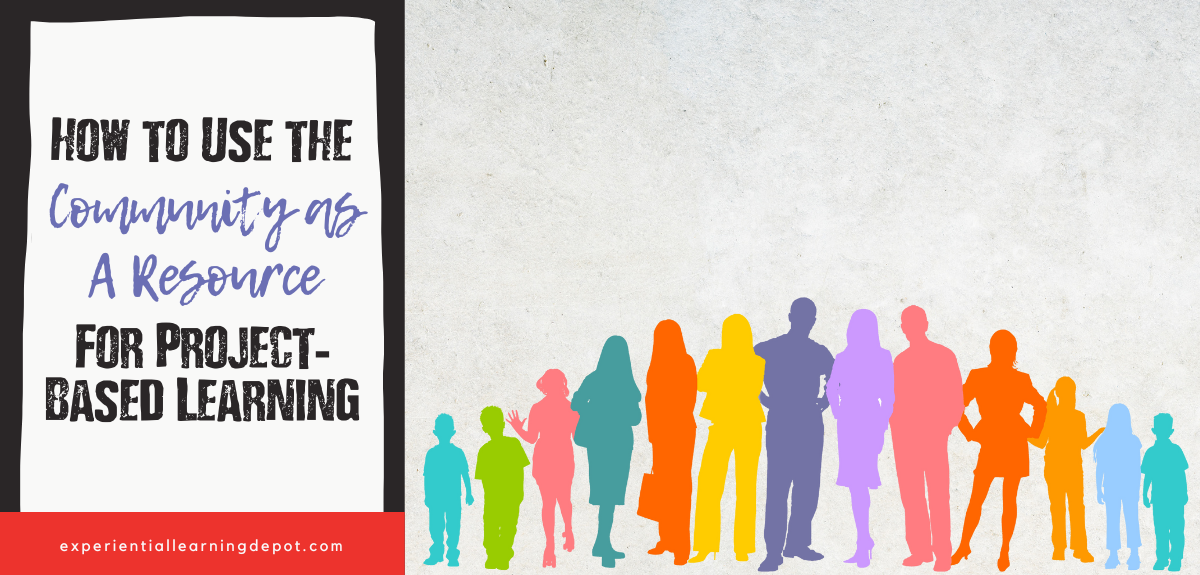
But how can students utilize community experts for project-based learning experiences? In what ways can learners use the community as a resource? Let's dive in!
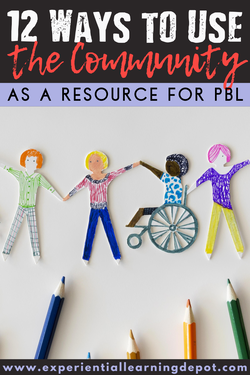
Acquainting and connecting learners with the community is valuable in so many ways, which is why project-based learning so heavily emphasizes community.
Connecting with community experts and using the community as a resource in other ways helps learners build important 21st-century skills such as collaboration and problem-solving.
Getting involved with real people about real-world issues encourages learners to find meaning and purpose in every PBL experience. Utilizing the community as a resource deepens learning.
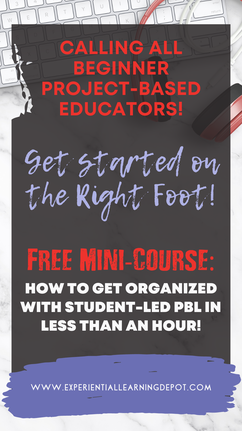
1. Shadow or observe experts in action out in the community:
Spending time on-site with a community expert is a graduation requirement for our students. Students reach out to a community member of interest and spend some time experiencing their day alongside them in their place of work.
This experience could be career-related but doesn't have to be. If a student is doing a project on bat conservation, they might shadow a bat conservationist to gather more information about the topic as it plays out in real life.
2. Invite community experts to the learning environment:
For example, my students created awareness campaigns for an endangered species PBL that they were assigned. I invited a graphic designer to come into the building to assist with final product creation, not to offer information about the content itself.
3. Include community experts in self-directed PBL design:
My students
identify and connect with their own experts
in the community as a source of information for their projects.
Students can interview their community experts, shadow them, have the expert teach them a skill, or work with them on a concept in-person or virtually. Students organize experts in the design phase of PBL.
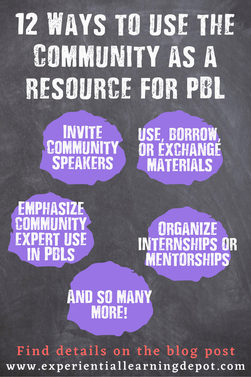
4. Invite community members to
come to
speak to your students:
Ask community members to come to speak to students about a topic related to a project or to introduce a topic. This is a great option for those of you that can't leave the building. The purpose of an experience like this is not necessarily for providing expertise about a topic, but to inspire students and create interest in a topic.
5. Invite community members to teach your students a skill:
6. Use the world as the classroom (if you can):
Take students on field trips and educational travel experiences. There are a variety of benefits to traveling, and immersing students in other communities is a big one. Mixing up learning environments allows students to observe other communities and potentially collaborate, partner up, or arrange for student exchanges.
7. Gather feedback from community members:
One way of using the community as a resource is to ask that community members weigh in on student work. Invite community experts to evaluate students' work periodically as well as provide formative feedback.
You can also ask community members to observe and evaluate student work at presentation or exhibition events. You don't have to only include community members that have been actively involved in student projects. Invite everyone in the community so that they can see what your students do.
8. Get students actively involved in community events and issues:
9. Community immersion through service- learning:
Service-learning is a great way to connect content, concepts, and skills to community needs. Any service learning experience can be designed using the project-based learning framework.
10. Service-learning from the classroom:
The cool part about this approach is that students can serve the needs of, interact with, and partner beyond their local communities.
11. Utilize community resources:
One of our local universities has been amazing in this way. I have done science lessons using their greenhouse and we have used donated wind turbine kits to study wind energy in their biotechnology lab. A neurologist from the college has come into my school with an actual human brain for students to study.
A nearby church donated all of their leftover garage sale items to our school for our own sale. One of my students was building a go-kart for his senior project. He worked with a mechanic the gave him half of the parts he needed.
The list goes on.
12. Organize student/community mentorships:
For example, I had a student who did a PBL about hobby farming. He connected with a local rancher for resources and expertise, but the relationship didn't end there. The ranchers asked my student back to the ranch for a summer internship.
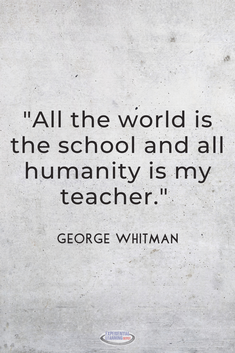
Focusing on community in project-based learning may seem like an additional task to an already demanding load. But if you plan well and put some of the responsibility on your students, it may actually feel like you're saving time, and the end result is worth it. The benefits are worth it.
Please, friend, leave a comment! In what ways do you think community resources such as the ones mentioned in this post could enhance learning experiences for your students?





0 General Document comments
0 Sentence and Paragraph comments
0 Image and Video comments
General Document Comments 0

